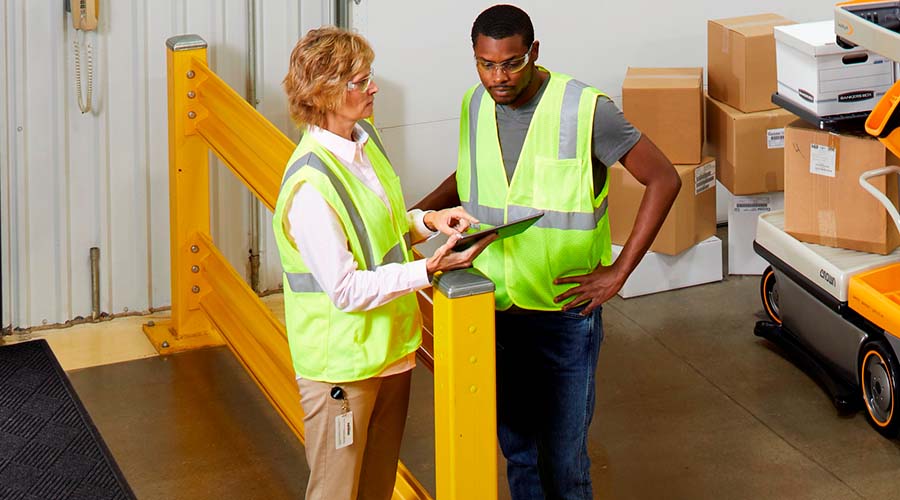Is Your Workforce Ready for Greater Connectivity?

Almost no one likes change and that basic trait of human nature must be considered in any technology implementation, especially when you are bringing greater connectivity to your facility.
When managed properly, the initial reaction your workers may have to the changes introduced by connectivity can be effectively minimized and eventually eliminated as they gain an understanding of the value to the business.
We’ve identified seven keys to implementing connectivity solutions designed to ensure a smooth transition, reduce employee resistance and set the stage for long-term results.
1. Commit
Success begins with commitment from the top levels of an organization. When it comes to the transition to—and continuing evolution of—warehouse connectivity, it is important to have a focused management team and a culture committed to continuous improvement.
Don’t embark on the connectivity journey if you aren’t convinced of the value to your business. When business leaders and managers are ambivalent about new technology, operators and supervisors sense it and act accordingly.
2. Communicate
It can be unsettling when new technology shows up with no forewarning. Take advantage of regular team meetings to let your operators know what’s coming and how it will help them. Don’t be afraid to answer questions, address concerns and be frank about the changes the new technology will bring.
Be prepared for potential resistance from some operators who may initially view connectivity as a move to “big brother” management. When educated about the benefits it can deliver, that resistance often turns into excitement.
3. Plan
Challenges in the early stages of an implementation can occur when processes haven’t been adapted to the changes connectivity enables. If processes aren’t tailored to the functions of the connectivity solutions, they can break down and operators, supervisors and managers alike get frustrated. Your connectivity provider should have the experience to help you understand the impact and re-engineer processes prior to equipment implementation.
4. Train
Training is a key component of any implementation. Even solutions that are designed to be intuitive and easy to use benefit from training. Not only do operators, supervisors and managers get an introduction to the full capabilities of the system and practice using it, they can feel more involved and invested in process.
5. Engage
Give operators an opportunity to ask questions and share experiences during the early stage of the implementation. It may take several weeks for operators to get comfortable with the system. Giving them direct access to specialists from the technology provider during that period can ensure they are fully engaged in ensuring the solution delivers on its potential rather than fighting against it.
6. Monitor
Use of a connectivity solution can lose momentum when the initial glow of implementation starts to fade. One of the biggest values of connectivity is the data it provides. If managers aren’t using that data to achieve goals, such as reduce impacts, increase utilization or improve productivity, momentum may not be sustained and expected results can fail to materialize.
Maintaining momentum requires accountability and positive feedback, with supervisors consistently responding with actionable steps that drive positive change. Periodic upstream reporting on data analysis and subsequent action steps sustains engagement and provides upper management with a window to system engagement levels.
7. Expand
Create a plan to build on early success by tackling new business objectives or expanding connectivity to new sites. As you put in more hours on your system, you’ll begin to build an archive of historical data that can be used to optimize facility operations and help prepare for automation. Your technology provider should have services available to help you use the wealth of data you’re now collecting.
As you embark on your connectivity journey, you’ll most likely discover that your workforce is more ready for connectivity than you expected. When leadership makes a commitment and focuses on training and engaging employees at all levels throughout the implementation, connectivity can be seamlessly integrated into warehouse processes.
For more information on the benefits of greater connectivity in the warehouse, download Crown’s e-book Achieving Material Handling Connectivity.